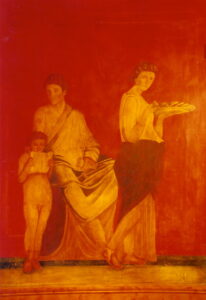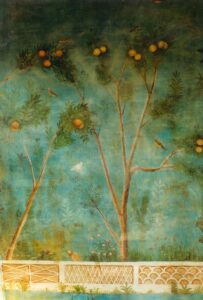12 Apr Historical view to art and murals
There are many types of artists in today’s art world and in comparison with past ages it is a
confusing arena to be working in.
Historically pre-renaissance artists worked uniquely for the church who sponsored all the great
works of art culminating in the incredible ceiling murals by Michael Angelo in the Sistine Chapel.
In early grand houses and castles, pre-renaissance private houses in Europe would usually have
beautifully woven tapestries from Flanders hanging on the walls which were more practical than
having murals painted on the walls or ceilings.

The renaissance saw the start of private art commissioning, the first very wealthy banking
family the Medicis started to buy and support the arts, where previously only Royalty or the
church was the principal sponsors the new ‘nouveau riche’ opened up opportunities in all the
areas of the arts.
Post renaissance saw many stately European homes commissioning artists to paint murals to
the walls and ceilings especially in Italy in the Palladio grand houses which as well as grand
murals featured rich faux marbles with floating figures painted in the grand hallways.
In today’s eclectic world the art establishment has become as much investment as pleasure and
artists pushing to stand out have invented ever more bizarre and original ways to represent
themselves.
My personal influences as a mural painter were an early fascination with all things old and
antique, when I first saw the rich worn colors in the ruins in Pompeii I was captivated.
The big difference is that as with a painting you can admire the work and information visually in
a mural you are standing in the atmosphere, being transported to another time and place, this is
largely a romantic yearning for a different visual era.

A painting is a much easier object to buy and transport whereas commissioning a mural is a
more permanent investment, for this reason, the artist is commissioned to paint the mural or
trompe l’oeil has a great responsibility to consider the many aspects involved.
When I visit the prospective location I consider the light and history of the site and the taste of
the prospective client and their expectations, any work that I undertake I adapt my palette to
suit the environment taking into consideration any fabrics and furnishings.
My aim as a muralist is to leave the client feeling happy and enriched that they had chosen to
take the grand step of commissioning a mural then just buy a painting.




No Comments